Hong Kong: An Exercise In Controlled Chaos
From the annual Tuen Ng Festival to its infinite cultural crossovers, Hong Kong is a diverse and densely populated city that defies convention.
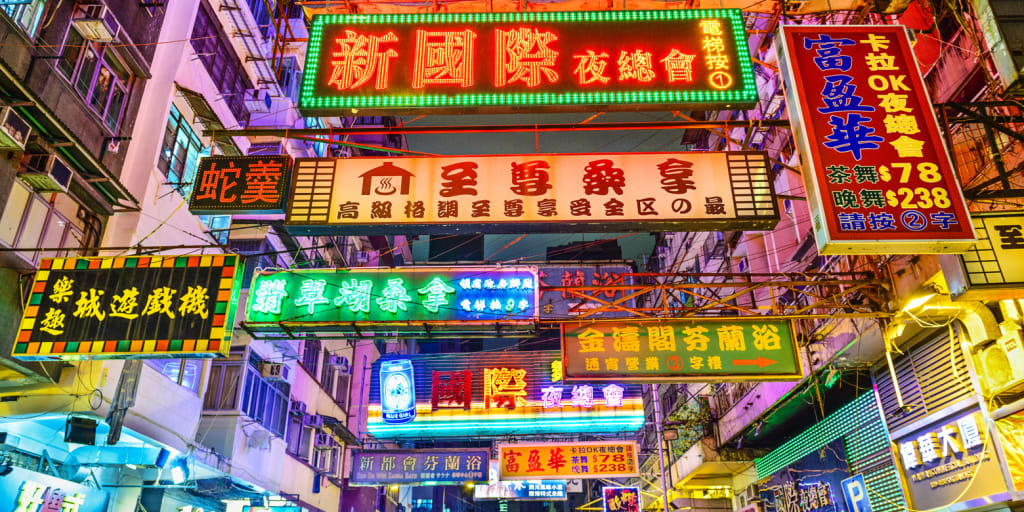
Despite the fact that Hong Kong is a modern metropolis and one of the financial epicentres of the world, strong local traditions are still not lost among the infinite cultural crossovers. Aromatic scents and even the smell of oriental food hang in the air, enveloping you almost everywhere you go. Along the streets an infinite number of neon signs flash in both English and Chinese, huge TV screens hang from the walls of buildings, adding to a overwhelming sensory overload of flashing lights as a barrage of voices, music and background noise envelops its visitors.
At the end of May every year, as part of the Tuen Ng Festival, almost every company and corporation in Hong Kong participates in a sponsored dragon boat race in the beautiful, palm-tree laden Stanley bay, situated on the south-eastern side of Hong Kong Island. The special boats, which measure more than 10 meters in length, feature ornately carved and painted ‘dragon’ heads and tails, and each carries a crew of 20-22 paddlers.

Hong Kong is a bombardment on the senses, a vibrant fusion of East and West.
Participants train in earnest for the competition and a large of number of teams take part every year, usually raising money for charities at the same time. The teams then race the elaborately decorated dragon boats to the beat of heavy drums. Races continue throughout the day, usually with eight to ten boats racing at a time. The crew sits two abreast, with a steersman at the back and a drummer at the front; the paddlers race to reach the finishing line, urged on by the pounding drums and the roar of the crowds. This is dragon boat racing on a grand scale.
This ancient event, also known as Tuen Ng Festival, commemorates the death of a popular Chinese national hero, Qu Yuan, who drowned himself in the Mi Lo River over 2,000 years ago to protest against the corrupt rulers. Legend has it that as townspeople attempted to rescue Qu Yuan, they beat drums to scare fish away and threw dumplings into the sea to keep the fish from eating his body.
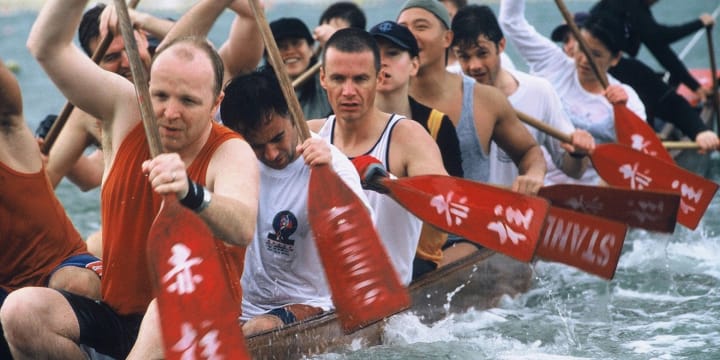
Almost every company in Hong Kong participates in the sponsored dragon boat race.
Today, festival activities recall this historic occasion as people eat rice-and-meat dumplings wrapped in bamboo leaves and many look forward to swimming or even simply dipping their hands in the water.
Countless numbers of luxury cruisers line up, moored along each side of the ‘racetrack’ as both participants and their guests alike eat food barbecued on the boat and soak up some sunshine, When it’s time to race, water taxis are hailed and the teams make their way through the jostling junks on the non-racetrack side of the moored cruisers.
Even if you’re not competing, the event can be just as much fun to watch while eating and drinking on the beach. Alternatively, cruisers of varying type and standard of luxury can be hired for the event if you prefer to watch the action from the water.
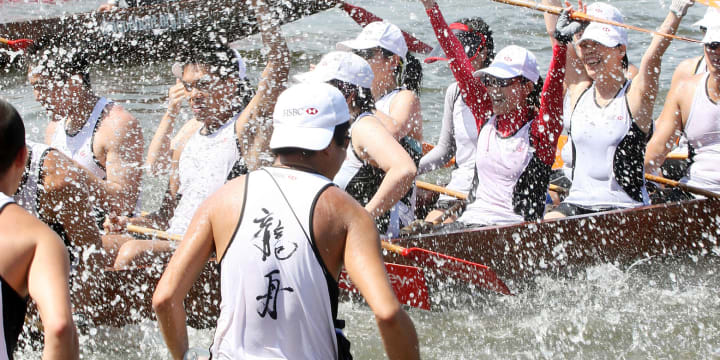
Even if you’re not competing, the event can be just as much fun to watch.
Not only does Stanley boast the biggest dragon boat race you’re ever likely to see, it is also a hidden Hong Kong hotspot of interest – along with neighboring Shek-O village. Stanley Market has become well known for its bargains in clothing – particularly silk garments and traditional Chinese dress – as well as ornaments, souvenirs and Chinese arts and crafts. It’s a popular destination for tourists and locals alike; people are drawn here by the inexpensive goods that would usually fetch a much higher price elsewhere.
After the annexation of Hong Kong in 1842, the British made Stanley the temporary administrative centre, before moving it to the newly founded Victoria City (present day Central) on the north shore of Hong Kong Island. Stanley is also the site of one of the oldest temples in Hong Kong – the Tin Hau Temple (Temple of the Queen of Heaven) – built by Cheung Po Tsai in 1767.
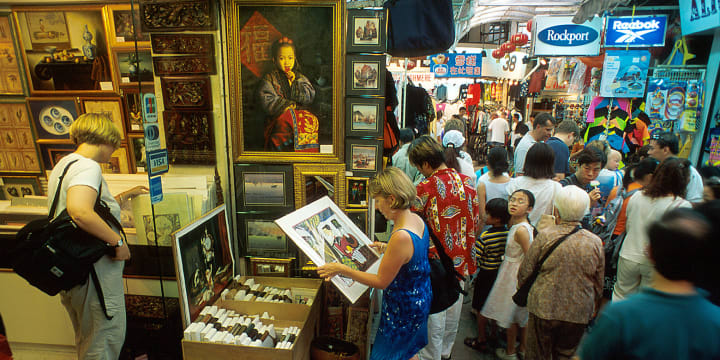
Stanley is also a hidden Hong Kong hotspot of interest – along with Shek-O village.
There are many bars and restaurants on its waterfront along Main Street where visitors can enjoy a variety of different foods, including French, Italian, American, Indian and Thai. Alternatively, you can just relax and soak up the friendly atmosphere in one of its numerous cafés. Bus numbers 6, 6A, 6X and 260 from Central all go to Stanley market.
A great way to see the city is on the Hong Kong tram system. At gentle speed, it runs from Sheung Wan all the way to Shau Kei Wan – practically the length of the island – and from here you can take in the sights, sounds and smells of the city and watch how the architecture evolves around you.
An essential item for traveling around Hong Kong is an Octopus card. This is an electronic travel pass of sorts and is now valid on almost all forms of public transport. Simply swipe your Octopus card across the front of the ticket machine screen as you board a bus, train (Mass Transit Railway or MTR) or ferry, the fare is deducted from your card and the screen shows how much you have left. You can buy these from any public transport ticket office and add money to them in most convenience stores. The Oyster card in London was modeled on this very system.
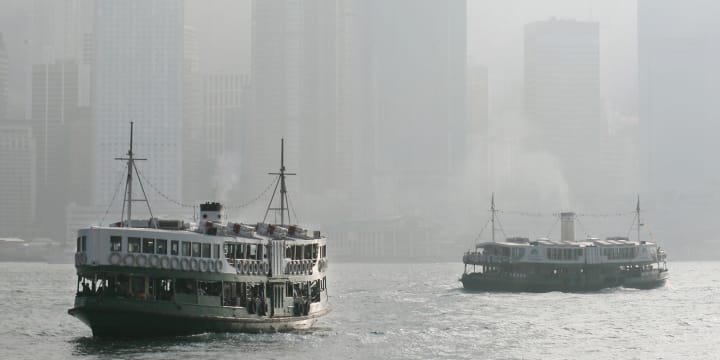
The best way to cross bustling Victoria Harbor is on the Star Ferry.
The most well known image of Hong Kong island is the view of the sprawling skyline from Kowloon, and the best way to cross bustling Victoria Harbor is on the Star Ferry. For a mere HK$3 you can gaze in awe for the 10-minute journey as the seemingly never-ending skyline comes into full view and a thousand junks scurry across the harbor in a frenzy of activity. For a double treat, travel after 8pm to enjoy the Symphony of Lights, the world largest permanent light and sound show displayed daily over 40 buildings.
Upon exiting the impressive international airport, the next step is to board the express train that runs from the airport to the city centre, or Central. This service runs about every 15 minutes and is fully air-conditioned and extremely comfortable. It’s also seemingly frictionless. It glides from the airport to the city centre in exactly 23 minutes, just like the announcement over the PA system promises.
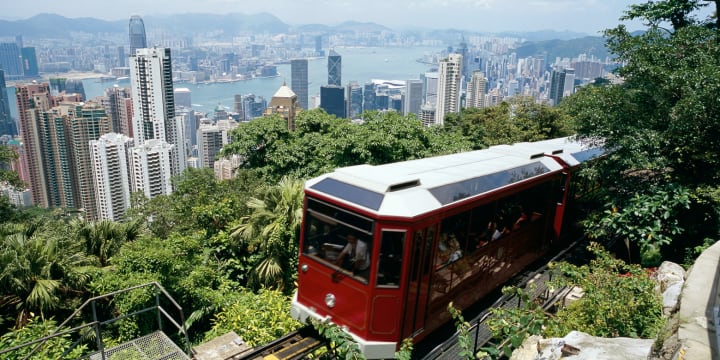
Get to the Peak on your first clear day - the sight of the city below is breathtaking.
The small yet superior differences continue: helpful, easy to understand displays located at key points in every carriage of the express show exactly where the train is on its journey and which station is next. There are also little TV screens on the back of each headrest so you can take note of public service announcements, tourist information, or just watch a little light entertainment.
Just in case you thought every conceivable need had been catered for, there are helpful and friendly baggage handlers waiting at each stop eager to assist you in any way they can with your luggage.
Three types of accommodations exist in Hong Kong; cramped guesthouses, adequate-but-uninspiring mid-range hotels and luxury hotels, including some of the best in the world. The Hyatt, for example, offers spectacular views across Victoria Harbor, but they will cost you. The prices, even for budget accommodation, are more expensive than most other Asian cities, but cheaper than those in Europe. Check out the Hong Kong Tourism Board website for more info and prices.
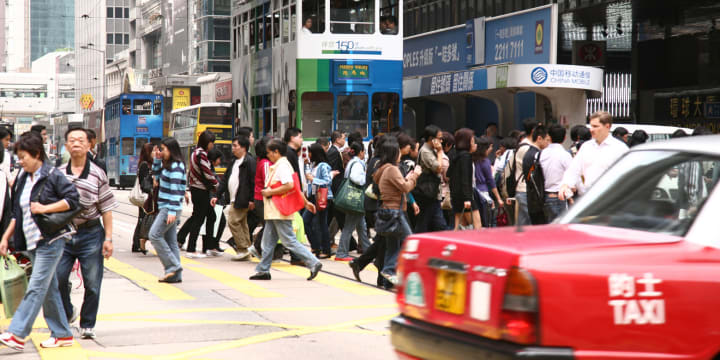
Most would imagine all of Hong Kong looks a little like this...
October to late January is the dry season and is always a good time to visit Hong Kong. During the first three months, skies are usually always clear, the sun is shining and the temperature is relatively cool, although there is still a risk of typhoons in October.
However, June to September is a mixed bag, and frankly much more interesting. Fine, though humid, days can be occasionally punctuated by showers. Spectacular thunderstorms become more frequent as June approaches and the summer monsoon season starts.
September brings a hint of cooler weather, but this is the time when Hong Kong is most likely to be hit by anything from a tropical storm to a severe typhoon, which can be devastating.
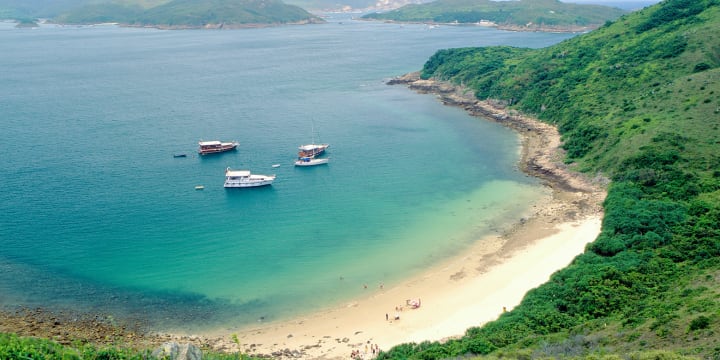
...but in fact, quite a lot of it looks like this
There are an almost infinite number of eateries, serving a wide variety of foods from different nations. For the best Vietnamese, Indonesian and Filipino restaurants, have a wander down to Causeway Bay and Tsim Sha Tsui. Chungking Mansions has some authentic Indian restaurants and for some of the best Dim Sum in Hong Kong try Yung Kee on Wellington Street, Central and King of Kings in the Entertainment Building (also in Central).
Hong Kong Island is a veritable Aladdin’s cave of tucked away and secluded bars and nightspots, plus there’s a wide spectrum of more mainstream watering holes ranging from luxury wine lounges to casual taverns. Check out Wan Chai and Lan Kwai Fong for an eclectic mix of different styles.
Wan Chai is Hong Kong’s well-known party district and home of the infamous Susie Wong Club. Wan Chai offers a high concentration of clubs including Joe Bananas, Carnegies, Delany’s and Dusk Till Dawn, plus a variety of late night restaurants. MTR to Wan Chai, Lockhart Road and Jaffe Road are good places to start the evening.
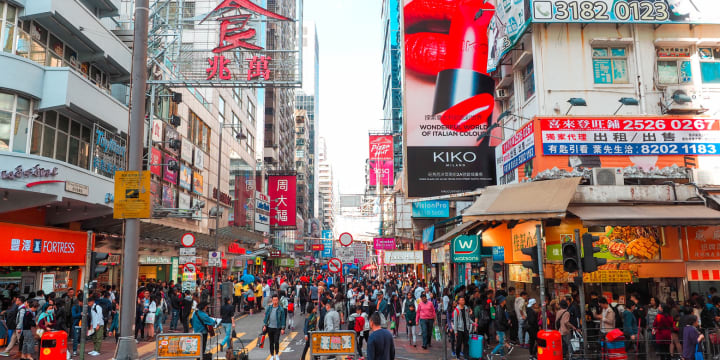
Shopping on Nathan Road is an experience.
During the late afternoon or early evening, most pubs, bars and even some nightclubs have happy hour where drinks can be bought for half price, or on a two-for-one offer. This typically takes place between 4pm to 8pm, but can vary on location, day of the week and season.
Make tracks for the Peak on your first really clear day. This is the highest point on Hong Kong Island and the sight of the sprawling metropolis below is breathtaking. This is a great way to put everything in Hong Kong in perspective and if you repeat the trip at night, the view of a million different colored city lights gently shimmering in the heat is hypnotic. Hop on the Peak Tram for HK$32, just past the Bank of China building and at the south-west corner of Hong Kong Park.
Resembling something like Oxford Street, only a thousand times bigger, and more populated, Nathan Road is on the Kowloon side of the harbor, accessible from Hong Kong Island by the Star Ferry and only a 10-minute walk from the ferry port. This is where you’ll be confronted by a tsunami of people selling fake watches and cheap tailor-made suits. Check out Causeway Bay for more up-market shopping.
About the Creator
Scott Snowden
Writer, editor, caffeine based life-form.


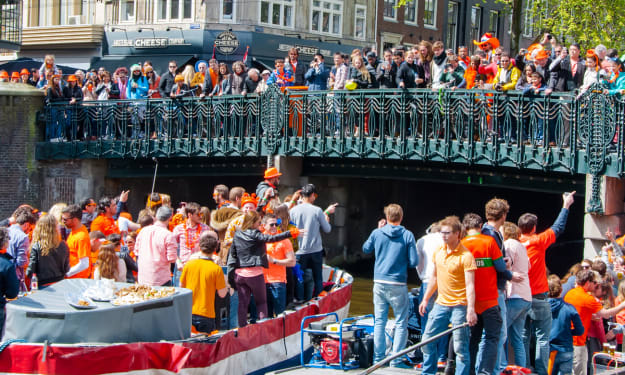



Comments
There are no comments for this story
Be the first to respond and start the conversation.